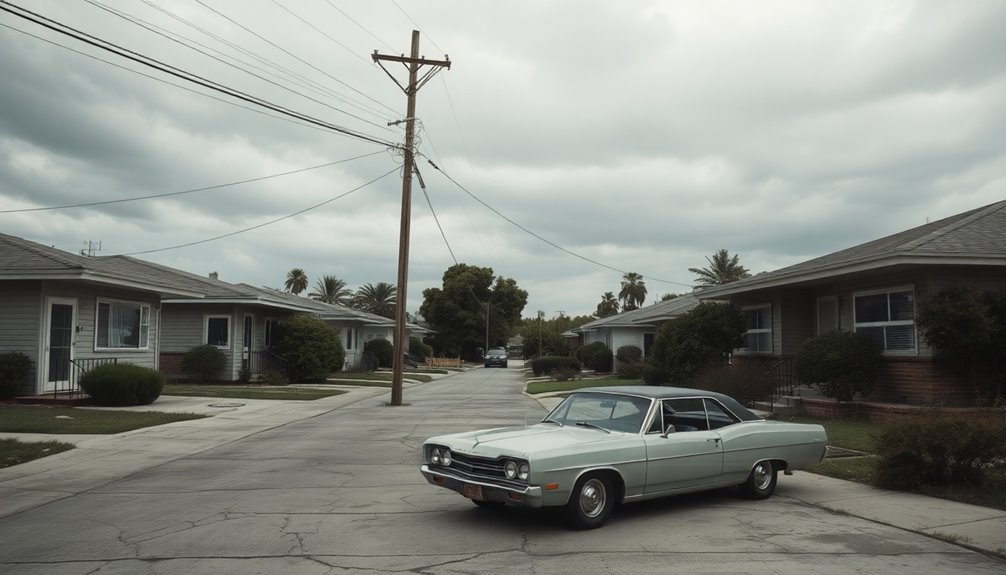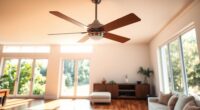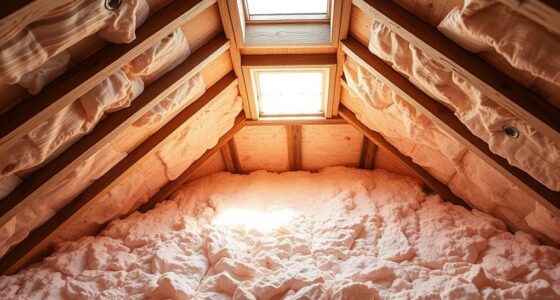Houses from the 1960s come with a host of problems that can impact your comfort and safety. Many lack proper insulation, making them energy inefficient and prone to moisture issues. Foundations often consist of slab-on-grade designs, leading to flooding and cracks. Roofing materials age poorly, resulting in leaks and structural damage. Plumbing systems may feature outdated galvanized pipes that corrode and hinder water flow. You might even encounter contractor challenges due to the specific needs of these older homes. To truly grasp the extent of these design challenges, you might find further insights invaluable.
Key Takeaways
- Many 1960s homes utilized concrete slab-on-grade foundations, making them prone to flooding and heat loss due to inadequate drainage.
- Roofing materials from this era often aged poorly, leading to leaks, sagging roofs, and structural damage requiring frequent maintenance.
- Insufficient insulation in walls and attics resulted in significant energy inefficiency, with single-pane windows further compromising thermal performance.
- Plumbing systems frequently featured galvanized steel pipes, which rusted over time, increasing contamination risks and leading to costly repairs.
- Contractor fraud was common due to minimal regulation, complicating the search for professionals familiar with outdated construction methods and hazardous materials.
Exterior Walls and Foundations
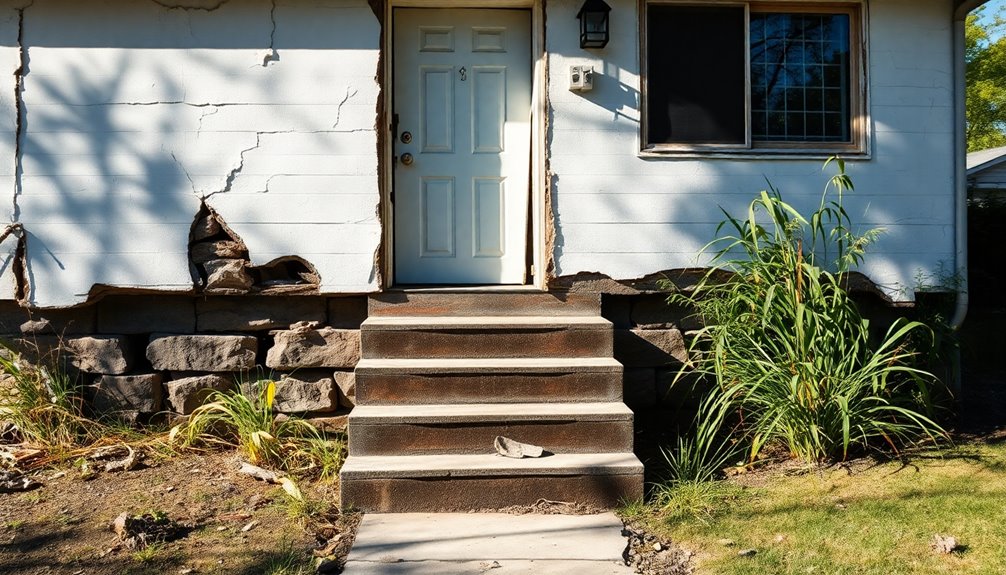
When considering the design challenges of 1960s houses, the exterior walls and foundations present significant concerns.
Most homes from this era utilized concrete slab-on-grade foundations, which sit directly on the ground, making them prone to flooding and heat loss. You might encounter common issues like drainage problems, soil settlement, and cracks in the foundation. Any crack exceeding 1/8 inch could indicate serious structural problems.
Additionally, the exterior walls often lack modern insulation, leading to poor energy efficiency and higher heating costs. Moisture retention and mold growth are also frequent due to inadequate ventilation.
Regular inspections are essential to identify and address potential foundation and wall problems, ensuring your home remains structurally sound for years to come.
Roofing Challenges
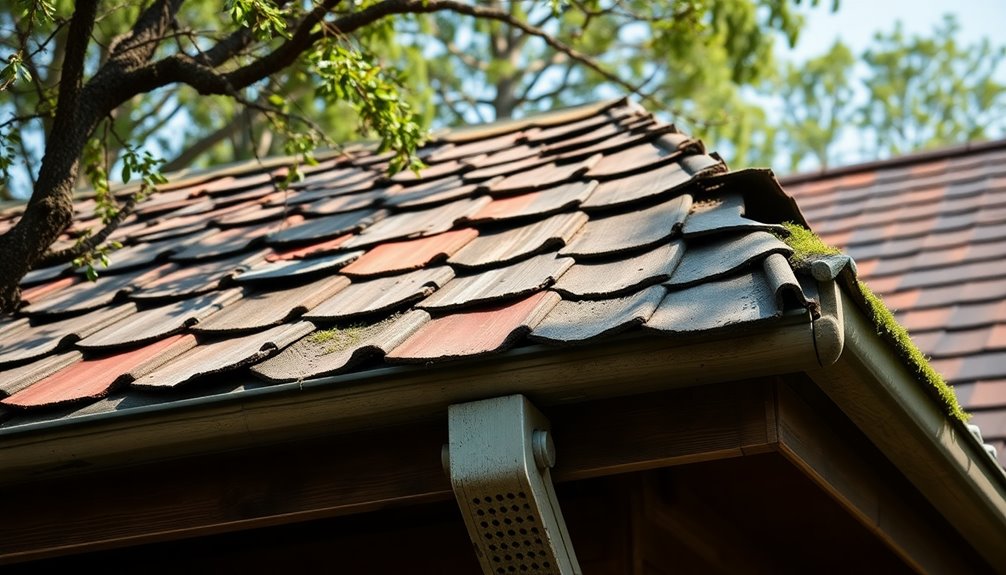
The roofing challenges of 1960s houses can be just as intimidating as issues with their foundations and walls. Many homes from this era feature aging roofing materials that are now susceptible to leaks and structural damage.
Flat roofs often suffer from gravel loss and cracking, while pitched roofs deal with damaged shingles that hinder proper water drainage. You might notice sagging roofs or weakened support beams, which could signal serious underlying problems.
To stay ahead of these issues, regular inspections by experienced roofers are vital. It's also important to select trusted roofing companies that understand the unique needs of older homes.
Addressing these roofing challenges effectively will help guarantee the longevity and safety of your roof.
Energy Efficiency Issues
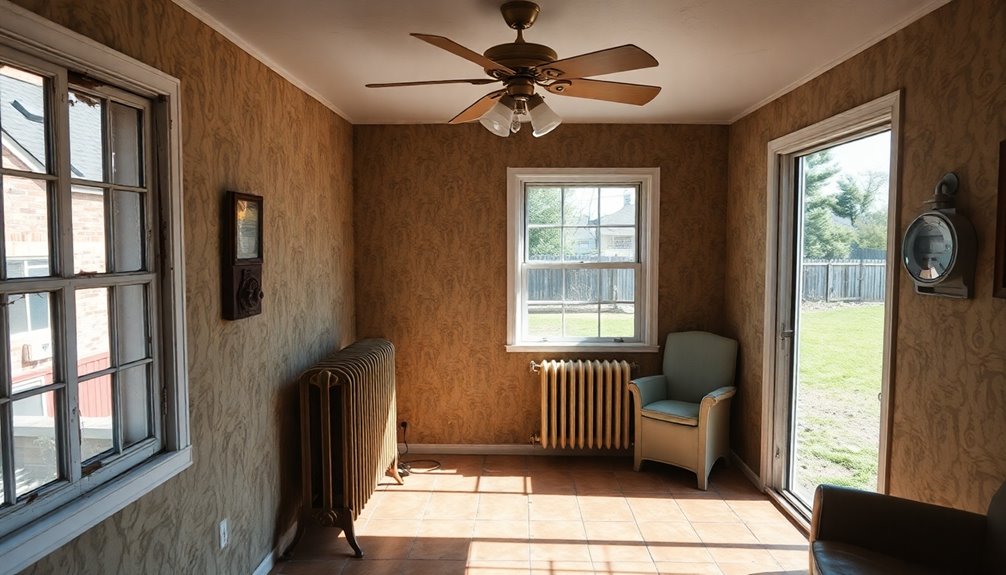
Though many 1960s houses have charm, their energy efficiency issues can be a real concern for homeowners today.
These homes often featured uninsulated single-pane windows that severely compromised thermal performance, driving up energy costs. Additionally, many lacked adequate wall and attic insulation, leading to significant heat loss.
Over time, the original attic insulation compressed, further reducing its effectiveness. The architectural trends of the era didn't prioritize energy efficiency, making these houses less competitive with modern standards.
To improve energy performance, homeowners often face extensive and costly renovations, including upgrading to energy-efficient windows and enhancing insulation.
Addressing these energy efficiency issues is essential for creating a more comfortable and cost-effective living environment.
Plumbing Problems
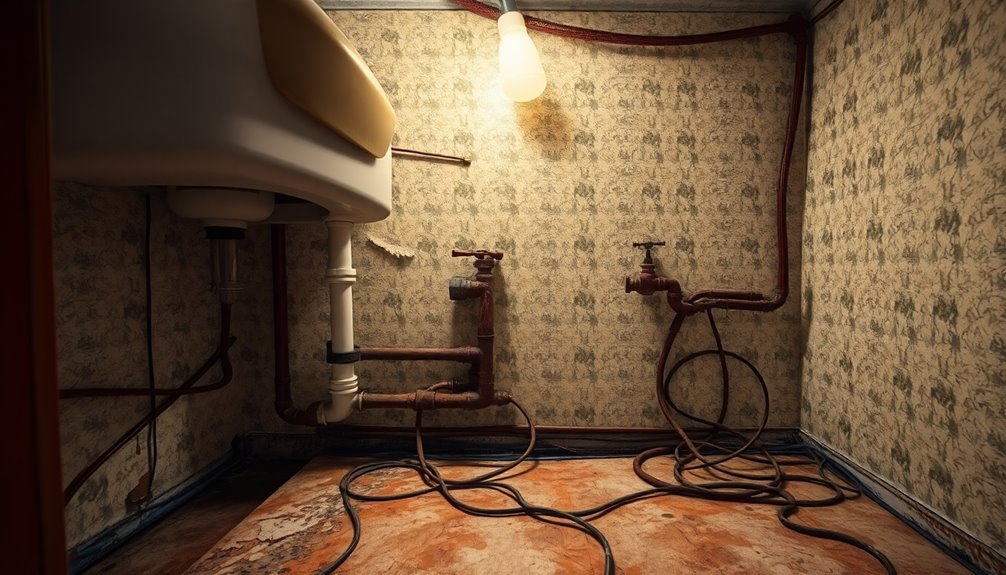
As homeowners of 1960s houses often discover, plumbing problems can pose serious challenges that impact daily life. Many of these homes feature galvanized steel pipes, which typically last around 50 years.
As these pipes age, they develop internal rust, leading to decreased water flow and the risk of contamination. Rust particles can clog fixtures and appliances, resulting in costly repairs.
Additionally, leaking pipes create significant risks for water damage, promoting mold growth and structural issues over time. To guarantee the reliability and safety of your home's plumbing, you might need to replace these outdated systems with modern materials like copper or PEX.
Addressing these plumbing problems is essential, especially in the context of affordable housing.
Contractor Difficulties
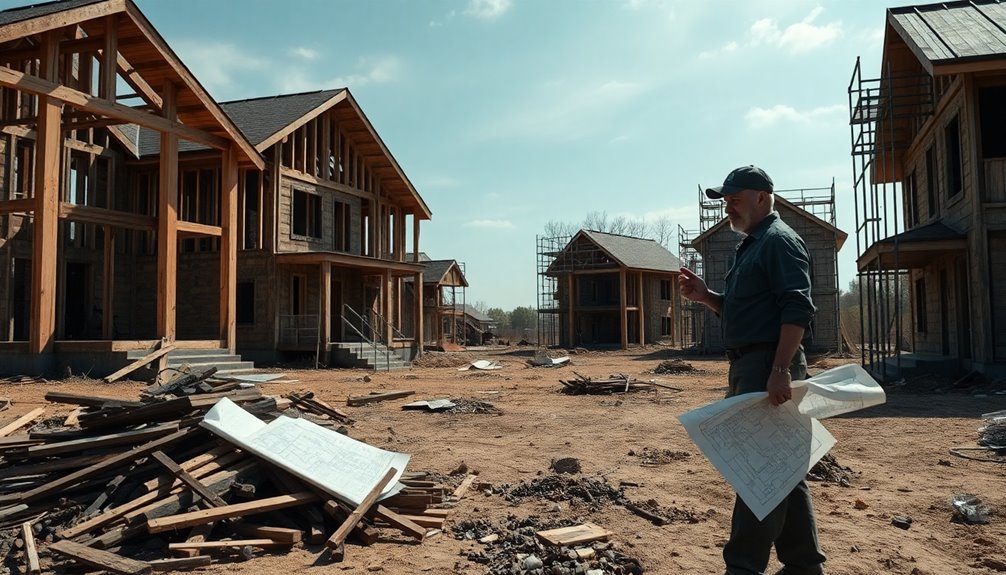
Steering through the renovation of a 1960s house can be intimidating, especially when it comes to hiring reliable contractors. The risk of contractor fraud looms large, given the lack of regulation back then.
You'll likely struggle to find professionals familiar with outdated construction methods and unique needs of your home built in that era, like slab-on-grade foundations and aging plumbing systems.
Additionally, hazardous materials, such as asbestos, may complicate the process, requiring specialized contractors for safe removal.
To navigate these challenges, research and review potential contractors thoroughly. Many homeowners aren't aware of typical issues associated with 1960s homes, so ongoing education about maintenance and renovation practices can help you make informed decisions and mitigate risks effectively.
Frequently Asked Questions
What Were the Problems With Homes Built in the 1960S?
When you think about homes built in the 1960s, you might notice several major problems.
They often had uninsulated single-pane windows, making them energy inefficient and costly to heat. Plumbing systems used galvanized steel pipes that rusted over time, while electrical systems lacked modern safety features.
Structural issues, like foundation cracks and drainage problems, were common, and inadequate insulation created uncomfortable living conditions.
These factors really impacted the overall quality of life in those homes.
What Were the Problems in the 1960S?
In the 1960s, you faced numerous challenges, including social upheaval and economic change. The civil rights movement sparked demands for equality, while the Vietnam War caused widespread protests.
Many grappled with rapidly evolving technology, shifting job markets, and cultural shifts that influenced everything from fashion to music.
You may have also felt the impact of suburbanization, as families moved away from urban centers, changing community dynamics and lifestyles markedly during that transformative decade.
What Are the Factors Which Affect the Design and Types of Houses?
When you think about house design, several factors come into play.
You've got location, influencing styles and materials. Your budget sets limits on choices, while lifestyle needs dictate layouts and space.
Climate affects insulation and energy efficiency, so you'll consider that too. Trends in architecture and technology also shape what you see today, as they evolve based on society's preferences.
All these elements combine to create the homes we live in.
What Was Housing Like in the 1960S?
Picture yourself walking through a typical 1960s home, where you'd find cozy but compact spaces, often with just a living room, kitchen, and a couple of bedrooms.
You'd notice the emphasis on functionality, with mid-century modern furniture and simple decor.
However, you'd quickly realize the lack of storage and energy efficiency, as single-pane windows and outdated plumbing systems contribute to an uncomfortable living environment.
It's a nostalgic era, but not without its challenges.
Conclusion
In the chaotic landscape of 1960s housing, you'd think builders were competing in a game of structural roulette! From crumbling foundations to roofs that seemed to think they were umbrellas in a monsoon, the challenges were monumental. Energy efficiency? More like energy extravagance! Plumbing was a veritable treasure hunt for leaks, and contractor woes turned dream homes into nightmares. Yet, amidst the chaos, these houses shaped a generation, proving that even the most flawed designs can hold untold stories.
